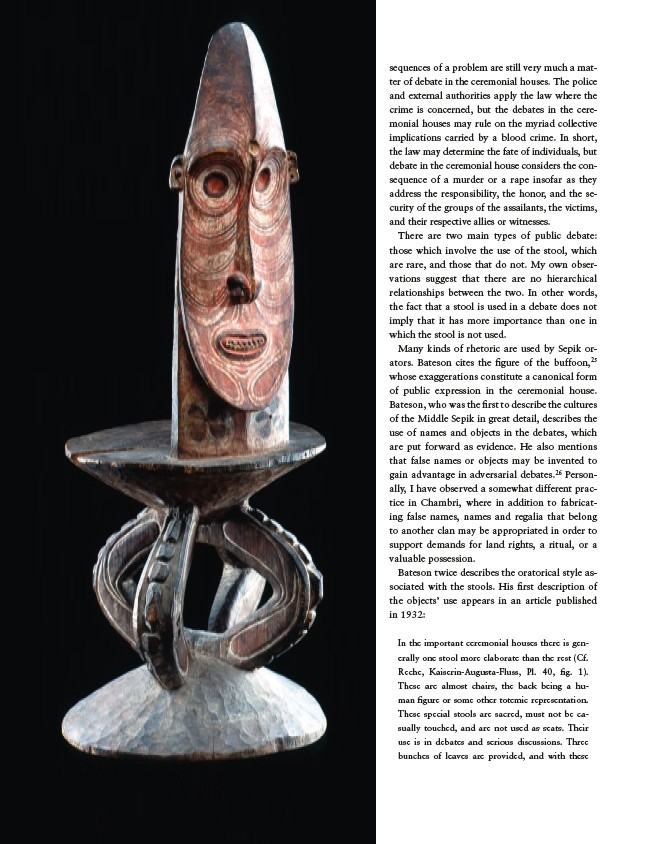
DOSSIER
110
sequences of a problem are still very much a matter
of debate in the ceremonial houses. The police
and external authorities apply the law where the
crime is concerned, but the debates in the ceremonial
houses may rule on the myriad collective
implications carried by a blood crime. In short,
the law may determine the fate of individuals, but
debate in the ceremonial house considers the consequence
of a murder or a rape insofar as they
address the responsibility, the honor, and the security
of the groups of the assailants, the victims,
and their respective allies or witnesses.
There are two main types of public debate:
those which involve the use of the stool, which
are rare, and those that do not. My own observations
suggest that there are no hierarchical
relationships between the two. In other words,
the fact that a stool is used in a debate does not
imply that it has more importance than one in
which the stool is not used.
Many kinds of rhetoric are used by Sepik orators.
Bateson cites the fi gure of the buffoon,25
whose exaggerations constitute a canonical form
of public expression in the ceremonial house.
Bateson, who was the fi rst to describe the cultures
of the Middle Sepik in great detail, describes the
use of names and objects in the debates, which
are put forward as evidence. He also mentions
that false names or objects may be invented to
gain advantage in adversarial debates.26 Personally,
I have observed a somewhat different practice
in Chambri, where in addition to fabricating
false names, names and regalia that belong
to another clan may be appropriated in order to
support demands for land rights, a ritual, or a
valuable possession.
Bateson twice describes the oratorical style associated
with the stools. His fi rst description of
the objects’ use appears in an article published
in 1932:
In the important ceremonial houses there is generally
one stool more elaborate than the rest (Cf.
Reche, Kaiserin-Augusta-Fluss, Pl. 40, fi g. 1).
These are almost chairs, the back being a human
fi gure or some other totemic representation.
These special stools are sacred, must not be casually
touched, and are not used as seats. Their
use is in debates and serious discussions. Three
bunches of leaves are provided, and with these